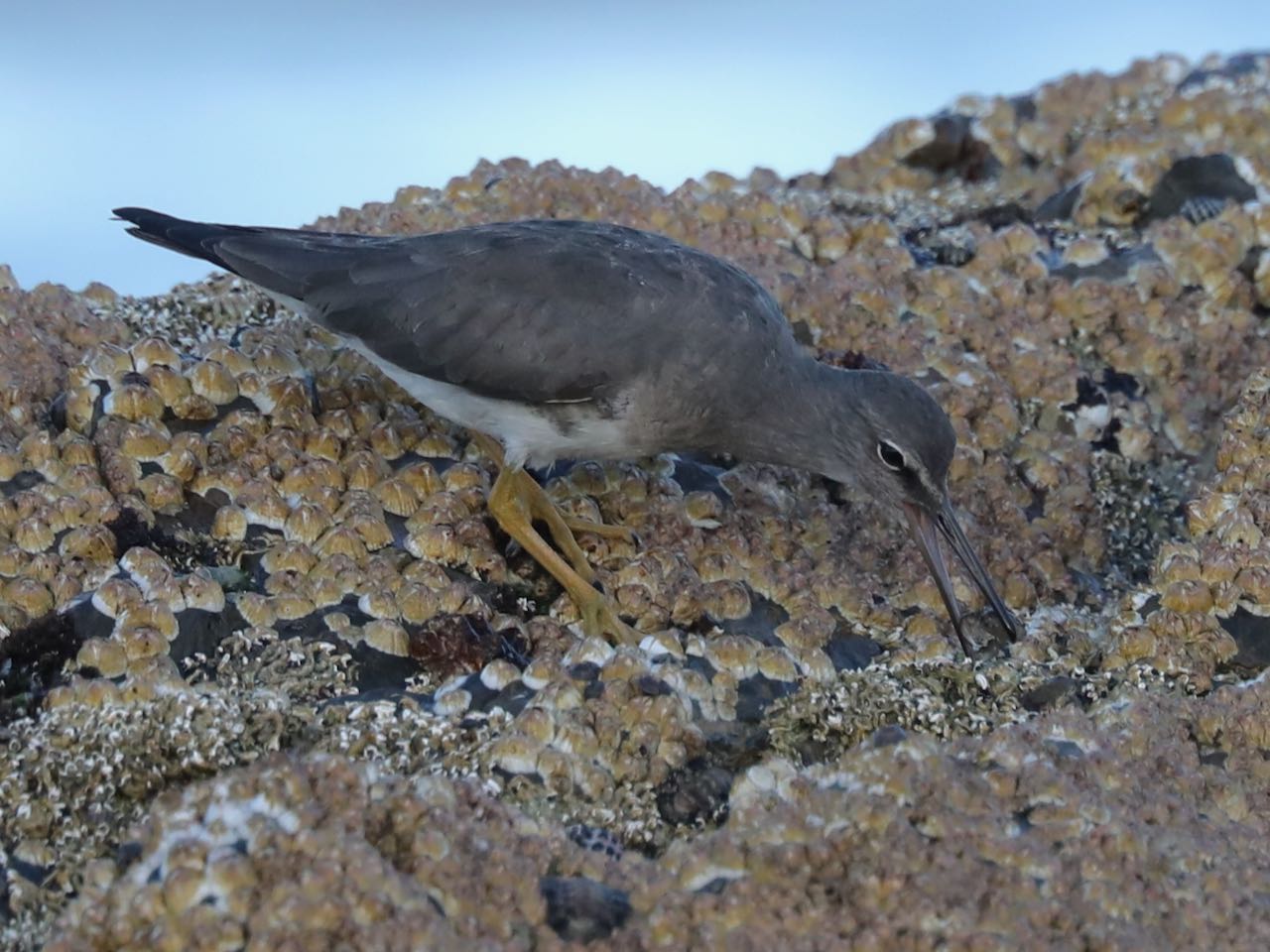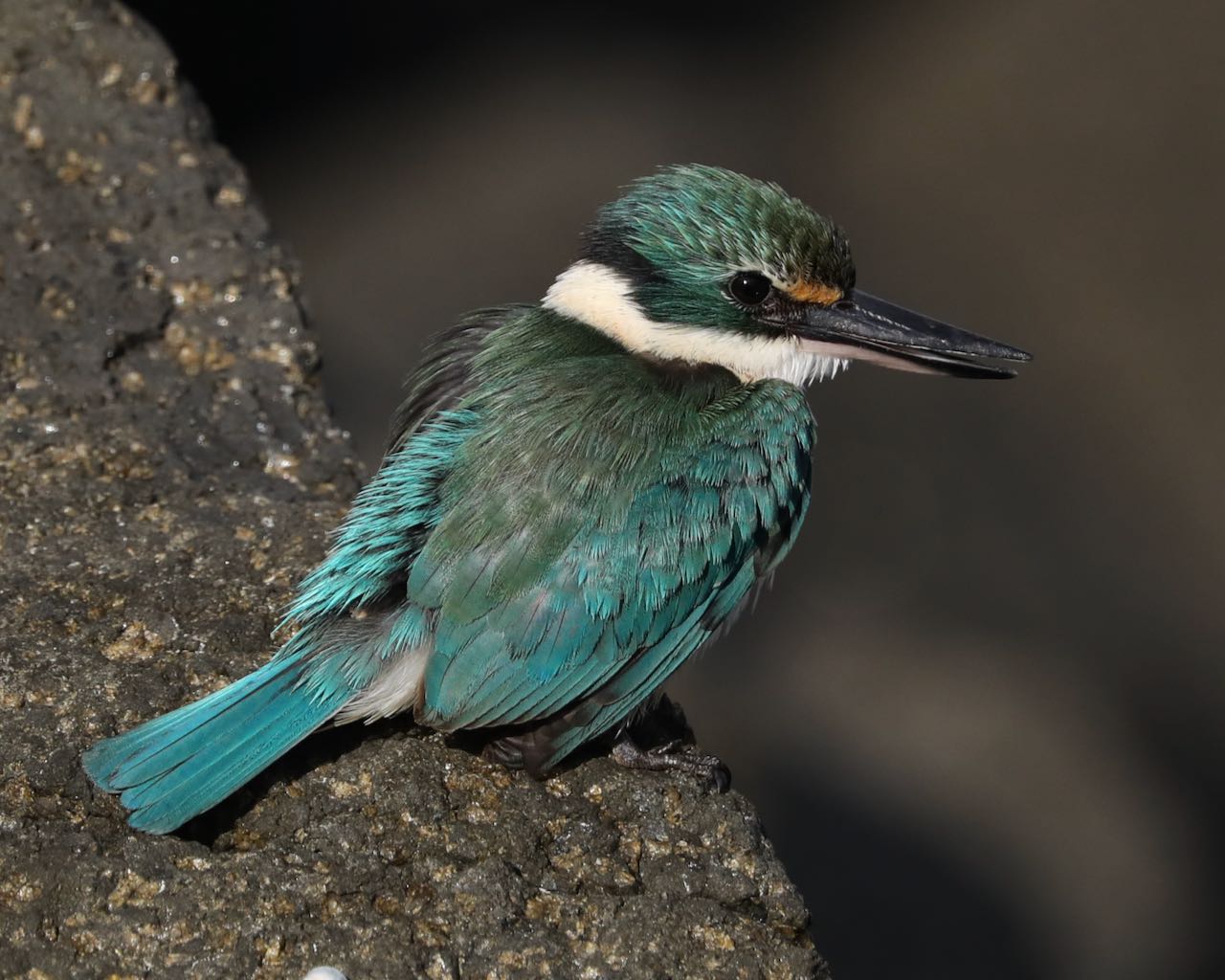Beach-stone Curlews are officially listed as critically endangered in NSW – they are listed as Vulnerable in Qld. In their NSW stronghold in the coastal Northern Rivers region there are thought to be about 13 breeding pairs. Resident pairs are sedentary and occupy breeding sites. Single transient birds recorded south of the Northern Rivers, including one or two birds in Victoria in recent years, are thought to be dispersing juveniles.
There is a resident breeding pair in the Brunswick Heads Nature Reserve with an area on Marshalls Creek tidal flats and fringing mangroves fenced off with information signs and warnings to keep out. Disturbance when breeding is the most critical threat to these birds - laying a single egg means they are slow breeders. Conservation efforts and public awareness via signage, coupled with fox baiting programs, may be helping to improve breeding and therefore increase the NSW population in recent years.
Beach-stone Curlews are coastal specialists specifically inhabiting the tidal realm and the fringing dryland where they target crabs – their massive bill can dismember even quite large crabs.
Recently late one morning on a dull overcast day I was fortunate to find the Marshalls Creek birds out in the open and within camera range – a moderately rare opportunity I suspect for this wary and mostly nocturnal and dawn/dusk foraging shorebird.
Please click on photos to enlarge.
The two birds in the following photo were standing together among oyster growing gear and looked to be loafing.
One of the pair took notice of me but did not seem too concerned by my presence.
I then noticed a third bird nearby which started moving towards the two birds I had initially spotted.
It stopped to probe for food a few times.
It kept moving towards the pair.
All three birds were together briefly, however with a long lens, depth of field is very limited so getting images with all three birds in focus is impossible unless they all line up side by side the same distance from the lens.
The third bird then moved off back from where it had come and the other two to my surprise then walked towards me. I think this was a nervous reaction to my presence and a way of assessing if I was a threat or not.
When photographing birds with a long lens it is only possible to keep one or two birds in the frame at once and therefore one loses sight of what the others are doing. From this point on I only had one or two birds in the frame with only one in focus as they did not come together in a close side by side position.
The following portrait shots are of each one of the pair which I suspect are male and female. It is possible the third bird is an adult offspring from the pair. Three birds have been reported on a number of occasions in Birdata in the area since a recently fledged young was recorded on 21/01/20. Adult Beach-stone Curlews look the same – there is no sexual dimorphism.
After the last shot above the pair moved away and a quick look for the third bird revealed it had flow across to an island - the pair then joined it bringing my photo session to an end.
Hopefully the coming breeding season – September to November – will be successful for the Marshalls Creek pair.











































